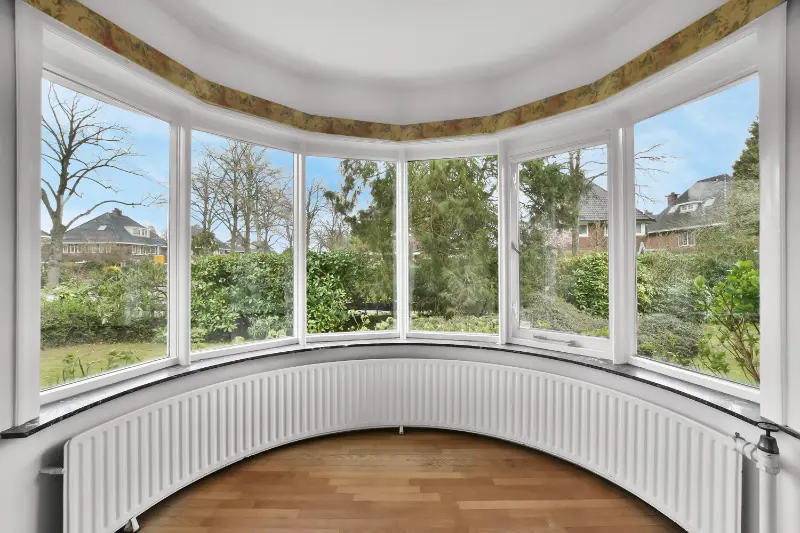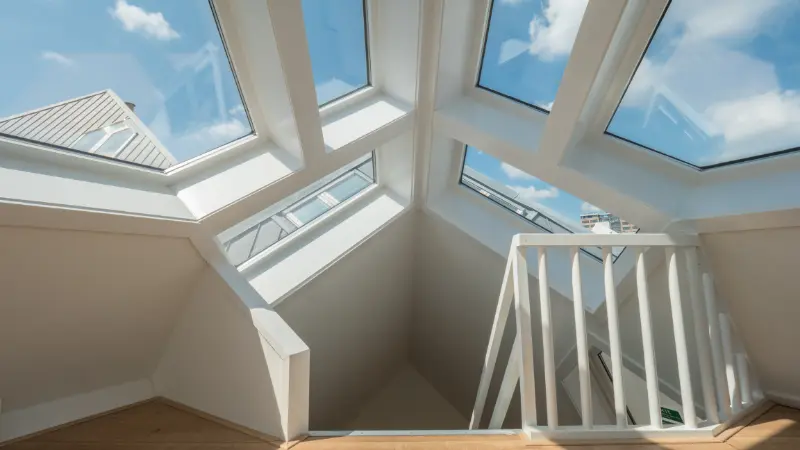As a homeowner, one of the most important aspects of maintaining your house is keeping the windows clean and in good condition.
However, with so many different types of windows available, it can be overwhelming to know where to start.
Not only do you need to consider the aesthetics of your windows, but you also need to think about their functionality, energy efficiency, and maintenance requirements.
In this article, we will provide you with a comprehensive guide on nine different types of windows and how to clean them.
By the end of this article, you’ll have a better understanding of the different types of windows available and their upkeep secrets. So, make sure to read on to gain valuable insights for every homeowner.

Understanding Window Types and Their Importance in Home Design
Windows do more than let light in; they are an intrinsic part of a building’s architecture and can significantly influence energy bills.
The right window type can frame your view perfectly, provide adequate ventilation, and even boost your home’s resale value.
By understanding the functional aspects of different window styles, homeowners can make educated decisions that balance beauty, practicality, and energy conservation.
Different Types of Windows And How to Clean Them
1. Bay and Bow Windows
Bay windows project outward from the main walls of a house, creating a sense of spaciousness and bringing in ample natural light. The bow window’s soft curve forms an elegant arch that’s not only visually appealing but also creates additional space. Popular for their panoramic views, they are often found in living rooms and family spaces. When it comes to cleaning bay windows, it’s all about reaching the angles.
Window Cleaning Process:
- Clean each section individually.
- Use a ladder for higher panes, ensuring safety.
- Apply a gentle spray from a hose for the exterior, then hand-wash with a soft cloth.
- Dry with a clean, lint-free cloth to avoid water spots.

2. Double and Triple Windows: Maximizing Efficiency, Simplified Wash Techniques
Double and triple-glazed windows, often the cornerstone of modern energy-efficient homes, are essential for those seeking to reduce energy costs. These windows consist of two or three glass panes separated by air or gas-filled spaces. This design not only enhances thermal insulation but also contributes to noise reduction.
Window Cleaning Process
- Combine water with a small amount of vinegar for an eco-friendly, streak-free cleaning solution.
- Start with the outer pane. Use a soft cloth or sponge to apply the solution gently. Avoid excessive pressure, which might damage the seals.
- Clean in a systematic pattern – either horizontally or vertically – to ensure you cover the entire surface.
- Repeat the process on the interior panes. Be cautious not to let the solution seep into the edges, which might cause fogging.
- Use a squeegee to remove the bulk of the water, followed by a dry cloth to eliminate any remaining moisture, especially around the edges and seals.
- Wipe down the frames and seals with a damp cloth. This step is crucial for maintaining the integrity of the window.
3. Single Hung Windows
Single-hung windows with a fixed top and movable bottom sash are traditional and widely used in older homes. They offer simplicity and a classic look. Cleaning these can be straightforward – typically, the lower sash can be tilted inwards for easy access to both sides of the glass.
Window Cleaning Process
- Dust sills and frames first.
- Use a soft sponge with mild, soapy water for the glass.
- Clean the exterior from the outside or by tilting the sash if possible.
- Dry with a squeegee or lint-free cloth to prevent streaks.
4. Double Hung Windows
Double-hung windows are a popular choice in residential properties, appreciated for their versatility and classic appearance. Unlike single-hung windows, both the upper and lower sashes in double-hung windows are operable, offering more options for ventilation and airflow. This flexibility makes them an ideal choice for various rooms in a house, from bedrooms to kitchens. Their design not only allows for efficient air circulation but also facilitates easy cleaning, making them a practical option for homeowners.
Window Cleaning Process
- Lay down a towel or cloth to catch drips and protect the sill.
- Gently slide each sash down and tilt or remove it for easy access.
- Use a glass cleaning solution or a homemade mixture of water and vinegar for an eco-friendly option.
- Spray or apply the cleaner evenly on the glass surfaces.
- Use a clean, lint-free cloth or a squeegee to wipe the glass. Move in one direction – horizontally or vertically – to avoid streaks.
- Wipe down the window frames and sills with a damp cloth to remove dust and grime.
- Ensure all parts are dry before closing the window to prevent water spots.
5. Casement Windows
Casement windows, known for their distinct style, operate similarly to doors, swinging outwards. They are highly sought after for their ability to provide excellent ventilation and unobstructed views. Their design is not only visually appealing but also functional, offering a clear and expansive view of the outside. The simplicity of casement windows extends to their cleaning process. Unlike more complex window types, casement windows offer straightforward access to both the glass and frame, making them a practical choice for any homeowner looking for style without compromising on ease of maintenance.
Window Cleaning Process
- Open the casement window to its full extent to access all areas easily.
- Pay special attention to the hinged side. Use a small brush or cloth to gently remove any debris that might hinder the mechanism.
- Use a glass cleaner or a homemade solution of water and vinegar. Apply it evenly across the glass.
- Wipe the glass with a clean, lint-free cloth or squeegee, using smooth, circular motions to avoid streaks.
- Ensure the glass and the frame are thoroughly dried to prevent moisture buildup, which could affect the window’s functionality.
- After cleaning, lightly lubricate the hinges to ensure smooth operation.
6. Awning Windows
The design of awning windows provides several advantages. They are ideal for hard-to-reach places like over the kitchen sink or in bathrooms, offering easy ventilation. Their outward opening feature doesn’t take up interior space, making them suitable for small rooms. Additionally, awning windows are known for their excellent energy efficiency, as their design creates a tight seal when closed. This tight sealing also contributes to reduced noise pollution from the outside. The window’s structure, allowing it to remain open during light rain, is particularly advantageous for continuous air circulation without the risk of water ingress.
Window Cleaning Process
- Ensure the window is closed before starting the cleaning process. Remove any screens for better access.
- The weather-tight seal is crucial for preventing leaks. Gently wipe it with a damp cloth to remove any dust or debris.
- Use a mild glass cleaner or a solution of water and vinegar. Apply the cleaner with a soft sponge or cloth.
- Wipe the glass in a circular motion or straight streaks to avoid leaving marks. Pay special attention to corners and edges.
- After cleaning, use a dry cloth to thoroughly wipe the glass and frame, ensuring there are no watermarks left.
- Check the hinges and locking mechanisms. If necessary, apply a silicone-based lubricant to keep the moving parts functioning smoothly.
7. Picture Windows
Picture windows are architectural marvels in the realm of home design, offering expansive, unbroken views that can transform any room into a visual spectacle. These windows do not have panes or slides, creating a seamless and wide canvas that showcases the outside world. They are often the focal point of a room, bringing in natural light and enhancing the aesthetic appeal of the space. While their large size may seem daunting in terms of cleaning and maintenance, their design simplifies the process, making them surprisingly easy to care for.
Window Cleaning Process
- Clear the surrounding space and lay down a protective covering to catch any drips.
- For the exterior, a long-handled squeegee is ideal. For higher windows, a telescopic pole can help you reach every corner without needing a ladder.
- Use a gentle, streak-free glass cleaner. Apply it using a soft sponge or a cloth attached to the pole.
- Start from the top and work your way down in smooth, overlapping strokes to cover the entire surface.
- After washing, use a dry cloth or a separate squeegee to remove any remaining water to prevent streaks and watermarks.
- The interior can be cleaned with a standard glass cleaner and a microfiber cloth. Pay attention to the edges and corners.
8. Transom Windows
Transom windows are a delightful architectural feature, often found above doorways or main window frames in homes. They not only add an aesthetic element but also allow more light to permeate the space, creating an airy and open ambiance. Their elevated placement makes them unique, contributing to both the interior and exterior charm of a property. While their position can pose a challenge for cleaning and maintenance, the process can be managed effectively with the right tools and methods, ensuring that these elegant windows continue to enhance your home’s appearance and feel.
Window Cleaning Process
- An extension pole with a squeegee attachment is often necessary for the exterior due to the height of transom windows.
- Choose a gentle, streak-free glass cleaner or mix water with a small amount of vinegar for a natural option.
- Attach a soft cloth or sponge to the pole to apply the cleaning solution to the window.
- Clean in smooth, horizontal strokes, starting from the top and working your way down to ensure complete coverage.
- If possible, gently rinse the window with water to remove any remaining cleaner.
- Use a dry squeegee or cloth attached to the extension pole to dry the window and prevent streaks.
9. Slider Windows and Cabinets
Slider windows, which move horizontally along the track, are emblematic of modern design while offering ease of operation. Remember to clean the tracks regularly with a brush or a vacuum attachment to prevent dirt build-up that could affect the sliding mechanism.
Window Cleaning Process
- Vacuum the tracks to remove debris.
- Clean glass panes with a squeegee and soapy water.
- Wipe down frames with a damp cloth.
- Lubricate tracks and rollers for smooth sliding.
10. Skylight Windows
Skylight windows are installed on the roof, brightening interiors and providing a unique aesthetic.
Window Cleaning Process
- Safety first: use a secure ladder or roof access.
- For high skylights, consider hiring professionals.
- Clean with a non-abrasive cleaner and a telescopic window cleaner.
- Wipe down frames and seals regularly to prevent leaks.

Final Thoughts
Proper window cleaning is more than just a chore; it’s an essential part of home maintenance. This guide aims to equip homeowners with the knowledge to care for various window types effectively.
Understanding and maintaining the different window types and styles is key to ensuring a bright, inviting home for the long haul. Proper window cleaning enhances your comfort, your view, and, ultimately, the value of your home.
When the task feels overwhelming, or you’re in search of that professional gleam, Matt The Driveway Guy stands ready to deliver professional window cleaning services at affordable rates. With our expertise in pressure washing and exterior maintenance services. Dial (864) 420-4172 and let the light shine through your impeccably maintained windows.






